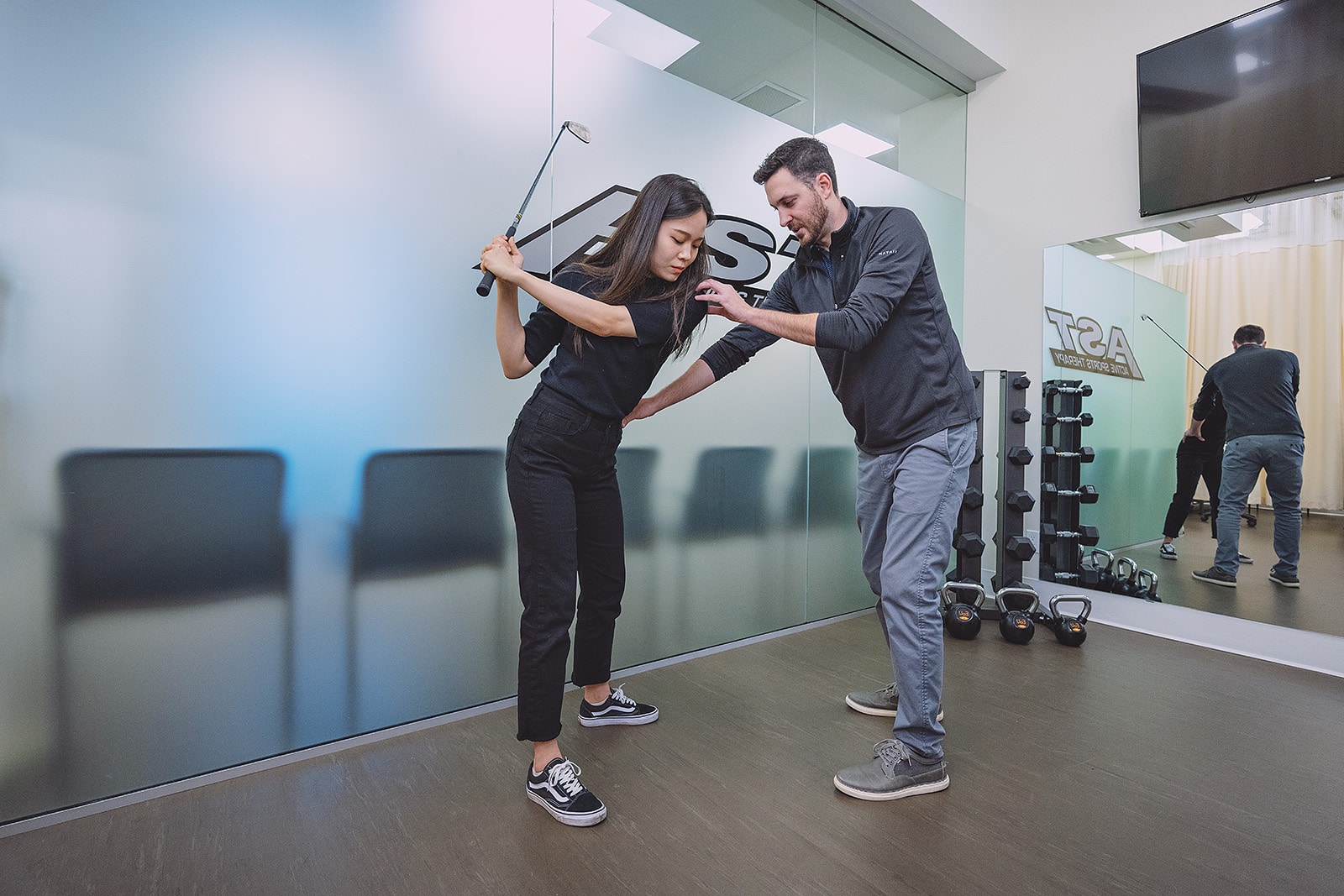By: Active Sports Therapy
If you’ve ever experienced pain in your forearm that you notice most when you grip or pick up an object, then you may be suffering from golfers elbow or tennis elbow. Named for the sports they are most often associated with, you can suffer from either of these conditions even if you’ve never swung a racquet or a club.
What they have in common are:
- Both involve inflammation and irritation of the tendons that attach to the elbow which is called epicondylitis.
- Both are caused from repetitive strain on the area.
- The main difference is where the elbow is actually inflamed.
What’s the difference:
Golfers elbow affects the side of the inner arm, or the medial side and is usually caused by an activity that causes the person to have repeated flexing downward motions of the wrist such as gardening, golf, or throwing a ball. Or, by repeated lifting with the palm facing downward such as laying bricks or scanning groceries all day as a clerk.
A person suffering from golfers elbow will experience pain on the inside of the elbow when lifting something. Even something as simple as lifting a coffee cup might cause the person to feel the pain and weakness associated with the condition. Making a twisting motion may cause pain as well. The person might also have swelling and weakness not only in the elbow and forearm, but also in the wrist and hand.
Tennis elbow is the inflammation of the outside of the elbow and/or forearm. If you think of a tennis player repeatedly using their forehand and backhand swings you might be able to picture exactly where one might become sore. People who are painters, cooks, and of course those who play racquet sports are particularly prone to tennis elbow.
The symptoms will be most noticeable when you need to grip something or reach for something, however, some people have tennis elbow that leaves them with a constant, nagging ache. For tennis elbow, the pain can radiate down to the wrist.
Other tips include:
- Ice the area when it becomes inflamed.
- Be serious about rest when your condition flares up.
- Do the prescribed exercises from your practitioner to ensure you stay on top of this injury. Consistency is your best friend for golf and tennis elbow.
- If you do play a sport that likely contributed to your injury, perhaps you could consult a professional to ensure that you form and technique in the sport is proper. Making corrections could prevent you from having future flare-ups.
- Wear an elbow brace if your practitioner feels that the compression and support could be helpful for you.
It is important to see a professional and have your pain properly diagnosed as one of the above conditions, or perhaps something different. At Active Sports Therapy we can treat this condition with Active Release Techniques which have proven to be successful in the treatment of this condition. Physiotherapy, massage, muscle activation techniques, and low-intensity laser therapy may also be recommended. If a muscle imbalance is at play, we can ensure that you know the correct exercises that will tone down or fix your condition.
*This blog is not intended to officially establish a physician-patient relationship, to replace the services of a trained physician, naturopathic doctor, physical therapist or chiropractor or otherwise to be a substitute for professional medical advice, diagnosis, or treatment.[/vc_column_text][/vc_column][/vc_row]



